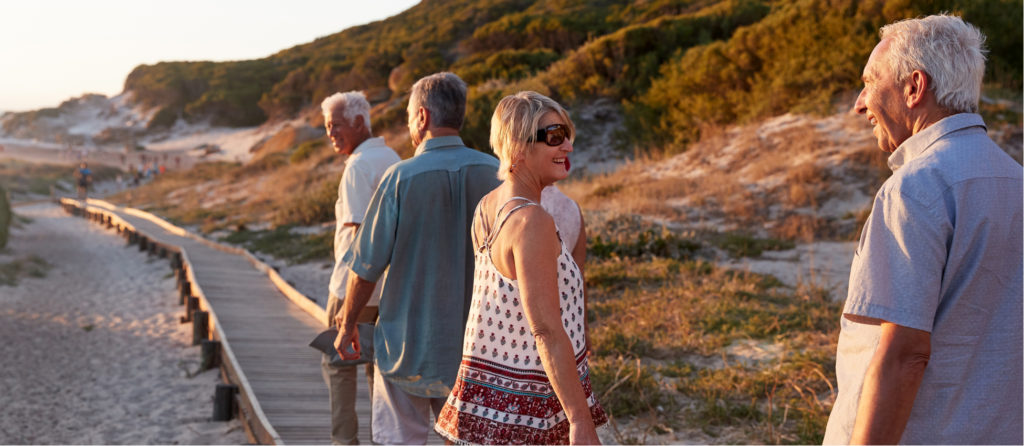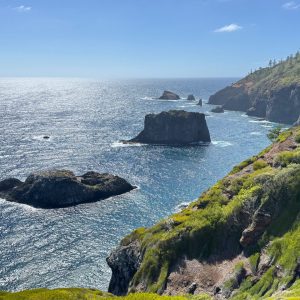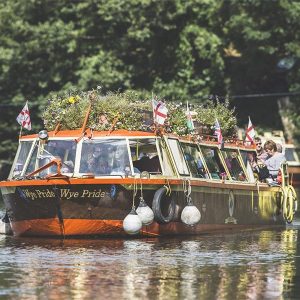From the South China Sea to the Sulu Sea, we travelled across Sabah, the island’s northern state where nature reserves protect some of the best wildlife in Malaysia. The capital beckoned with beaches and islands but we did not linger long. Rainforest, jungle, river: we were off to an amazing world.
Kinabalu National Park
Highest Peak in Malaysia
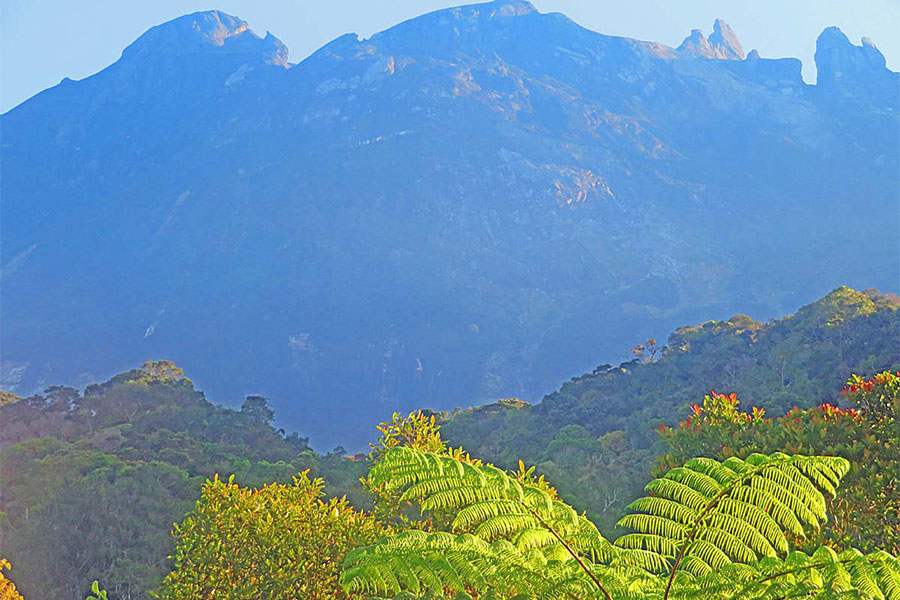
Up before dawn and there I was, gazing at the iconic Mount Kinabalu drifting in and out of the mist, the long crest brisling with peaks up to 4000 metres high. When the sun began to rise, golden shades spread all around and dozens of magpies, emerald green, flitted in the trees.
It was a magic moment yet within an hour or so, Kinabalu had returned to its slumbers, hiding in rambling clouds as it did almost every day. Meanwhile, tree ferns and rhododendrons splashed colour on the wooded slopes and the lonely sound of a coucal (member of the cuckoo family) echoed through the trees.
Flowers, Hot Springs and Canopy Walk
Close to our lodge (over 1500 m), the UNESCO park had attractions for everyone. We wandered in a ‘Botanical Garden’ where carnivorous plants and smiling orchids grew in virgin forest, looked out for butterflies and trekked to a waterfall.
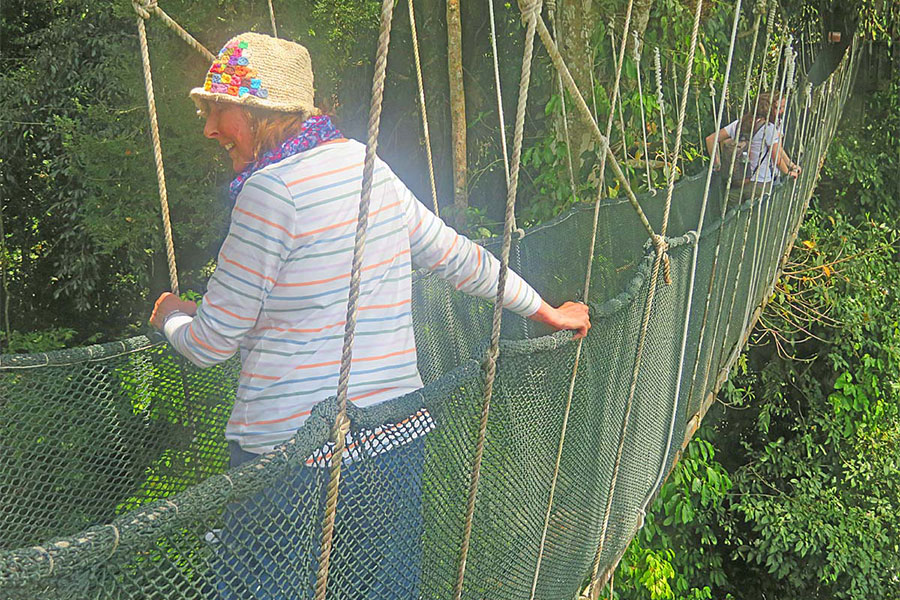
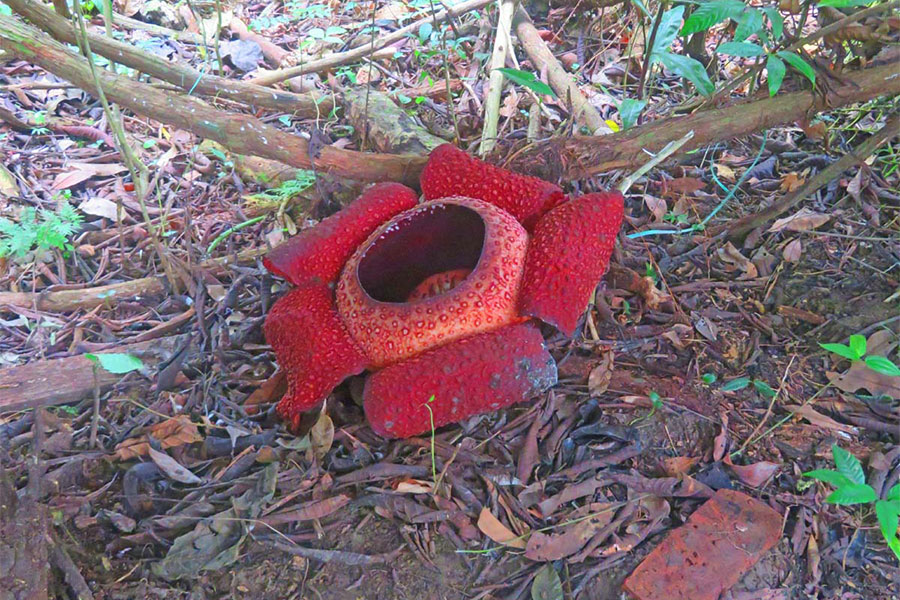
Down in the lowlands there was time to relax in the Poring Hot Springs and breathe in the fragrance, sulphur of course. But most exciting was the canopy walk, climbing to the treetops to follow the trail, bouncing high above ground, across frail bridges hanging from ropes. Tall swaying trees, exotic birds, precipitous drops and mysterious noises, it was a spine-chilling adventure and I loved it. We recovered in the reserve where the world’s largest flower, a rare rafflesia, greeted us in full bloom.
On the River
Kinabatangan
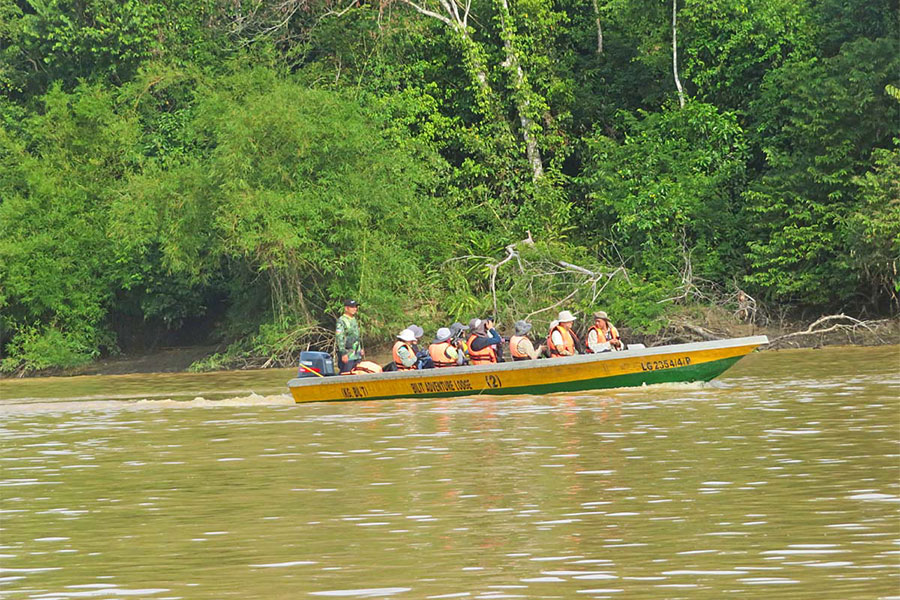
Driving east towards the Sulu Sea, we reached the longest river in Sabah, one of the top wildlife destinations in South-East Asia. I could not wait. Wide and sandy green, the Kinabatangan shimmered through the trees and totally bemused, we hopped into a boat sailing across to the jungle shore and our traditional lodge, accessed only by water. It was a friendly place away from it all with wooden chalets on stilts, flowers and trees and only tropical birds disturbing the peace. I enjoyed an early morning walk, spotted a tiny black squirrel up on my roof and on the edge of the sloping grounds, I saw my first orangutan, clambering up a tree. Wow!
Binoculars and Life Jackets
Essential, camera too, sun cream, repellent, waterproof, ready? Three river trips in just two days, plenty of time but forget the distance, this is all about stop and start, back and forth, looking out for the wildlife sleeping, watching or moving around. Guides and pilots never missed a thing, mobiles at the ready to share new sightings. Dumbfounded by so many sights, everyone kept quiet.
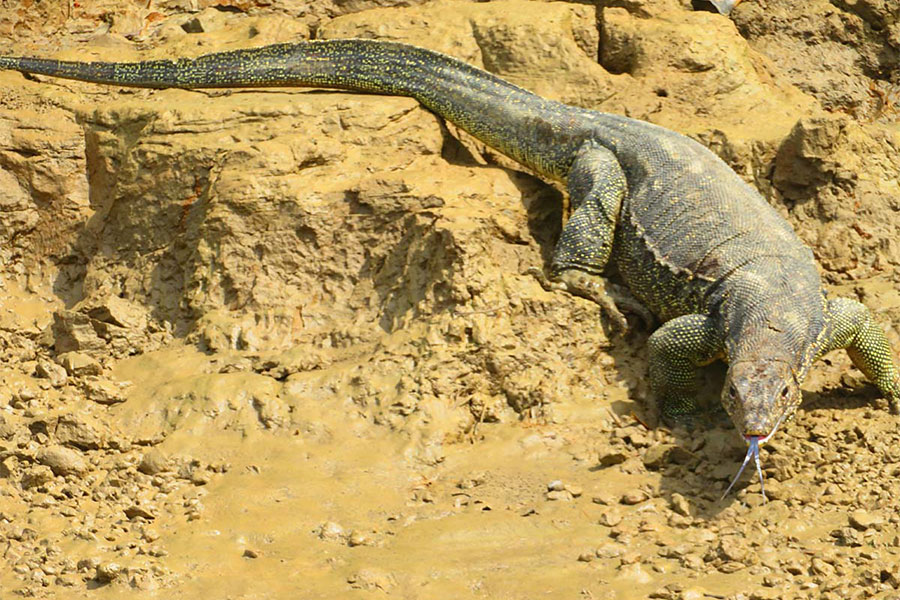
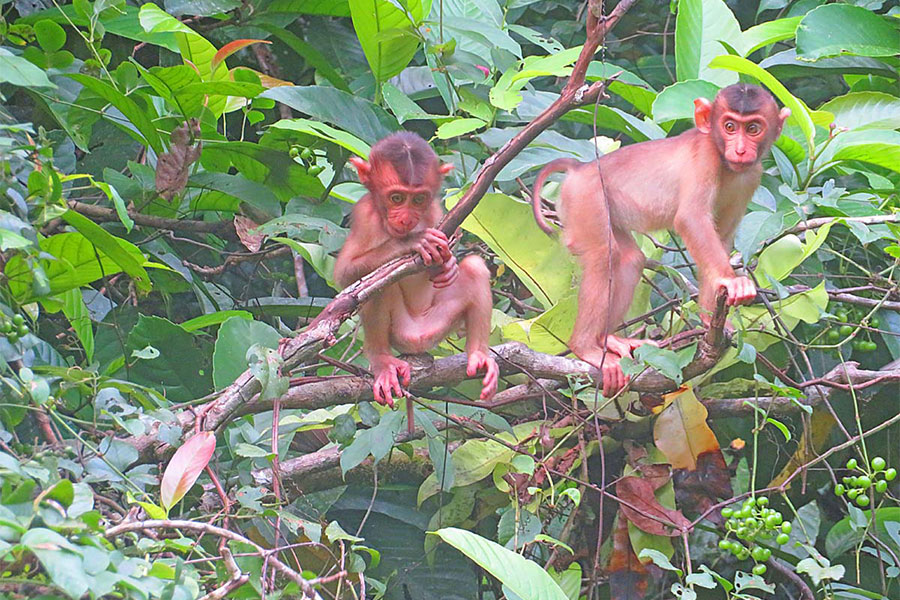
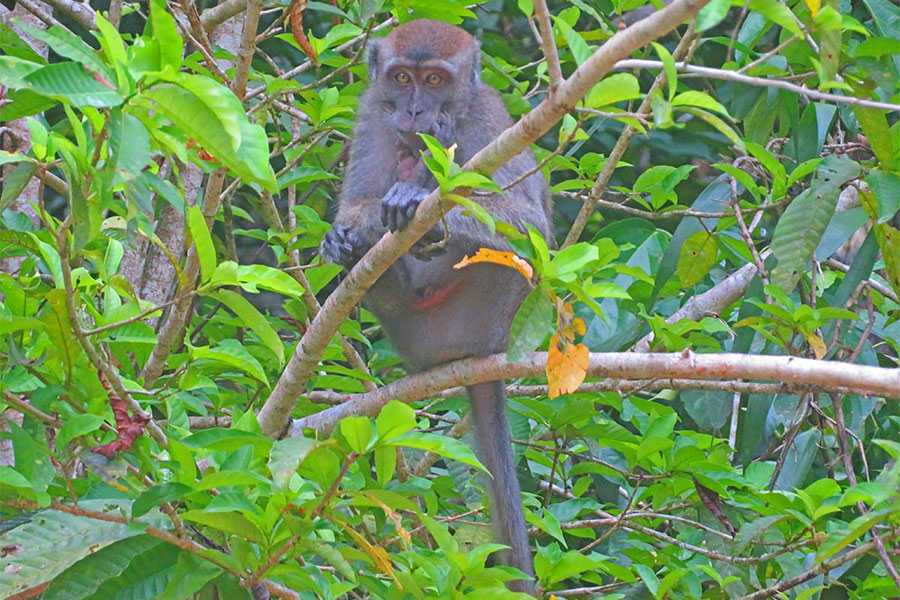
Crocodiles sliding into the water, monitor lizards basking on the muddy bank, monkeys all around, most boisterous the long-tailed macaques claiming colonies of fifty or more. Bright eyes, big ears, the young feasted on the most luscious leaves while others with silvery fur dozed in the shade. Then high up in the trees, it was the birds’ paradise, hornbills with powerful beaks, Brahminy kite, orange bristlehead, storm’s stork, to name just a few, or down by the water among floating hyacinths, a pretty blue-banded kingfisher.
Pygmy elephants kept out of sight but that night under the starlit sky, I dreamt of monkeys and gorgeous birds and more wonders to come on the final stretch of the trip.
Stunning Sandakan
City Sights
After the wilderness, what could we expect? Well, the second largest city took my heart away from its tree-lined avenues and wandering lanes to the turquoise bay and turtle islands. The Buddhist hilltop temple offered a bird’s eye view from mountains to sea while far below the central market brimmed with lemon grass, seafood and all the fruit and vegetables you ever imagined.
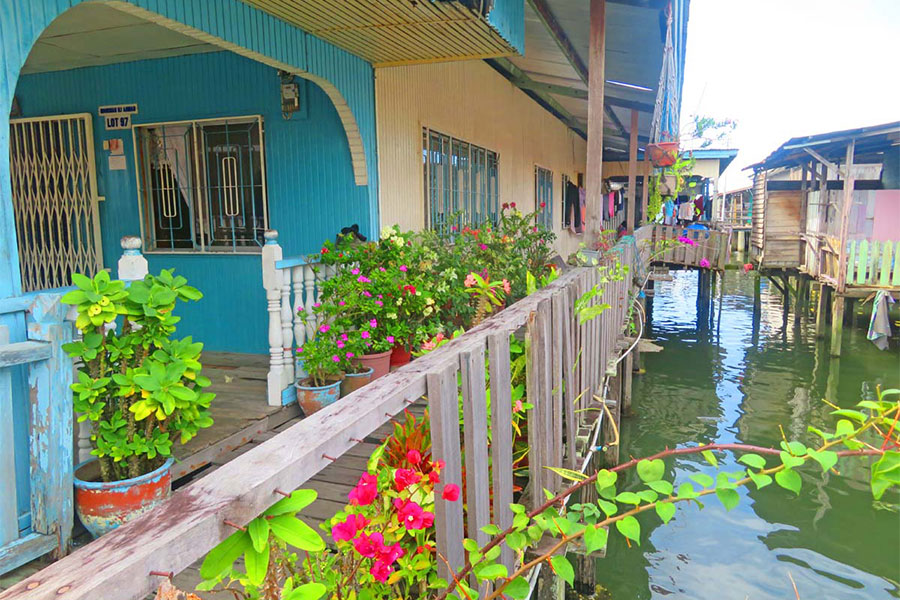
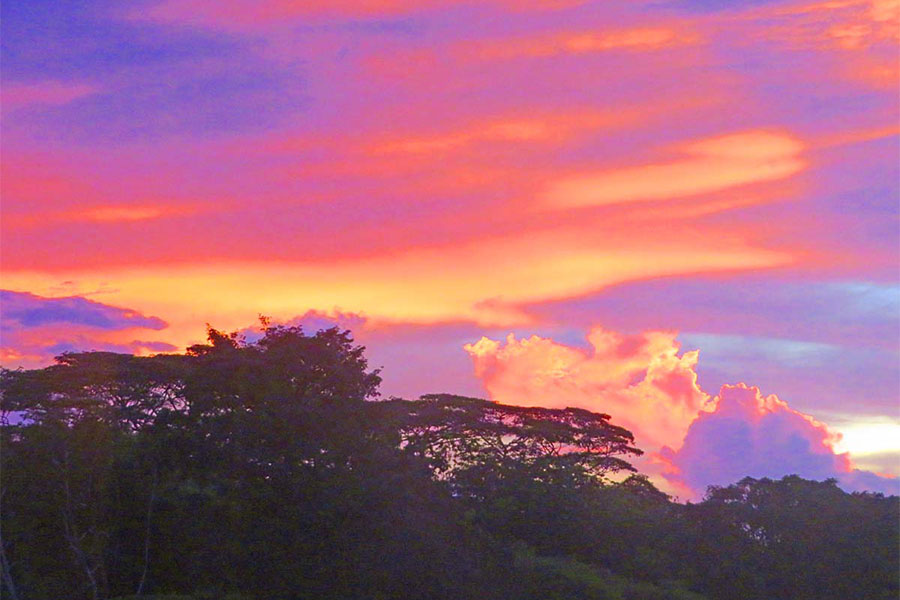
My favourite place was the floating village, perched on stilts, with rainbow coloured walls and washing drying in the breeze among potted plants and hanging baskets. We strolled along the planks, a fleeting moment in another world before the sunset, all lilac and gold.
Wildlife Sanctuaries
Not far from town, we explored the mangrove devoted to the endemic Proboscis monkeys. We had seen a few along the way but here the viewing platform guaranteed a closer view especially at feeding time. So, they came, honey-coloured with pot bellies and big fleshy noses, popping in and out of the bush, playing, eating, grooming their young or chasing intruders.
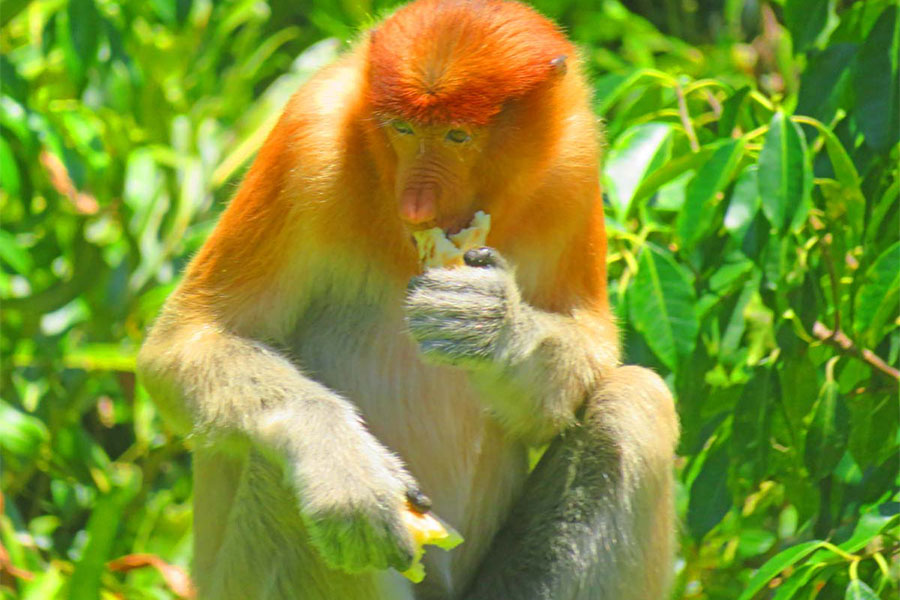
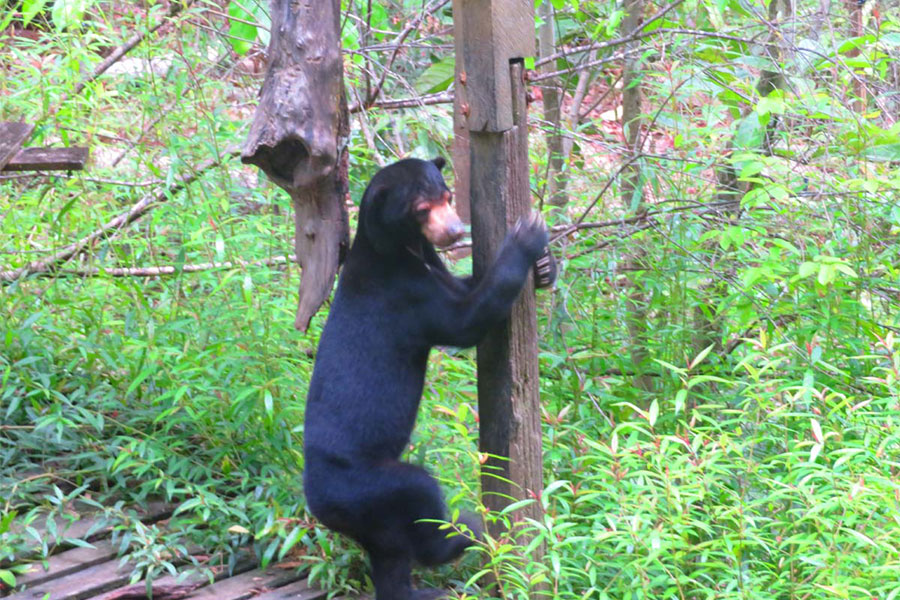
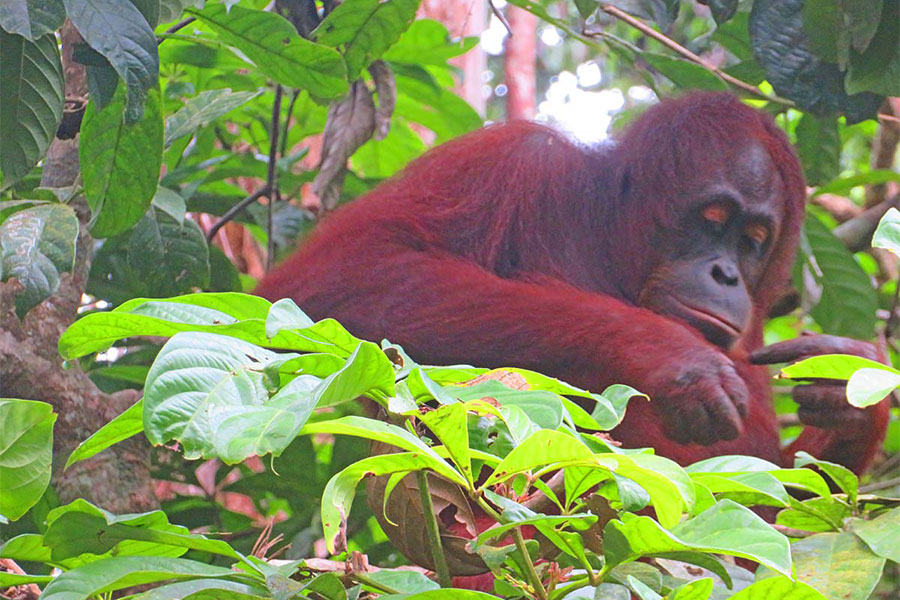
The next day it was Sepilok, Borneo’s popular conservation area where we marvelled at sun bears, the smallest bears in the world, named after the yellow ‘bib’ on their chest, then we conquered the Sky Walk for fabulous views of trees, plants and birds across the rainforest.
But the highlight was yet to come in the orangutans rehabilitation centre, caring for those injured, orphaned or displaced, until they can be safely returned to the wild.
‘This way to see the young, face masks please, even a human cold could kill them, then you can look through panoramic windows.’
We sat on the steps so everyone had a view and minutes later the little ones ventured out of the bush, ready to feed on open grounds before heading back into the trees to rest and play. Later we were guided along a boarded trail where the ‘grown-ups’ often scramble and feed in the trees. We knew they were there, leaves and branches swaying as they dangled across the narrow vale, great ‘Men of the Forest’, so much like us, I thought, and when a plump red-haired giant stared pensively into my eyes, just feet away, there was a connection I will never forget.
This was my first visit to Borneo and although oil palm plantations have destroyed the jungle in some areas, I was impressed by the island’s incredible wildlife and ongoing efforts to protect their natural habitat.
Next Steps
Solange Hando travelled with Saga Holidays on an 11 nights escorted tour of Wild Borneo.
Find out more and book through Silver Travel Advisor on 0800 412 5678.
